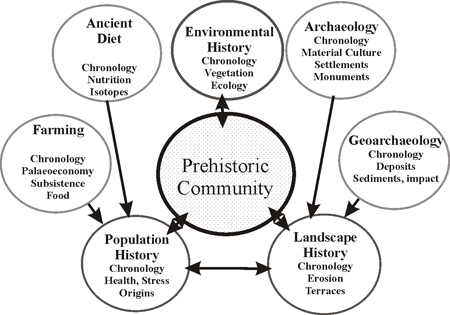Human Societies

Model of the Interdisciplinary programme themes
Typically human societies resident on large landmasses demonstrate catastrophic cycles of boom and bust, linked to deforestation, soil exhaustion/erosion, over-population and depletion of natural resources. Such scenarios, however, were not universal, and some communities developed stable and enduring socio-economic mechanisms. Their strategies maximised subsistence productivity, and included terracing, water management, close cropping, rotation, arboriculture, pulses, organised land tenure, ingenious food processing, storage and redistribution, such as ritual feasting. They may also have had social or other means that maintained steady population levels in an unstable environment. Eventually even these stable systems seem to change irrevocably or collapse, and this cyclical pattern of human expansion/ overexploitation/ decline-collapse forms a recurring debate in archaeology – the rise/fall of civilisation and the causes and effects that fuel this almost inevitable cyclical pattern; one that is as current today as in the distant past.